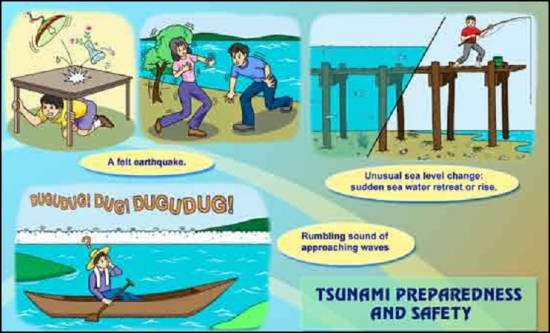What is Tsunami?
A tsunami is a series of giant sea waves commonly generated by under-the-sea earthquakes and whose heights could be greater than 5 meters. It is erroneously called tidal waves and sometimes mistakenly associated with storm surges. Tsunamis can occur when the earth is shallow-seated and strong enough to displace parts of the seabed and disturb the mass of water over it.Tsunami in the Philippines
The coastal areas in the Philippines especially those facing the Pacific Ocean, South China Sea, Sulu Sea, and Celebes Sea can be affected by tsunamis that may be generated by local earthquakes.In August 17, 1976, a 7.9 magnitude earthquake hit in Moro Gulf produced tsunamis which devastated the southwest coast of Mindanao and left more than 3,000 people dead, with at least 1,000 people missing. More than 8,000 people were injured and approximately 12,000 families were rendered homeless by more than 5-meter high waves.
The November 15, 1994 Mindoro Earthquake also generated tsunamis that left 78 casualties.
These tsunamis occurred within a very short time, with a first wave reaching the shoreline nearest the epicenter, 2 to 5 minutes after the main earthquake. These tsunamis were both locally generated. There will not be enough time for warning in case of locally generated tsunamis.
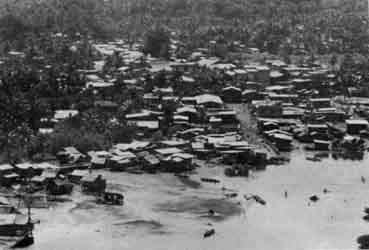
Picture of Damage Residential Area at Malabang, South Cotabato due to Tsunami surges in Mataling River brought by the 1976 Moro Gulf Earthquake (Photo: dost.gov.ph)
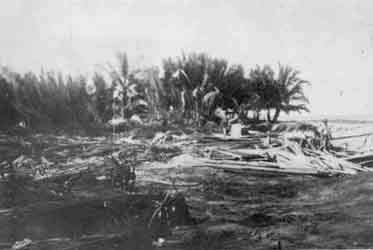
Picture of tsunami damage north of Zamboanga (Photo: dost.gov.ph)
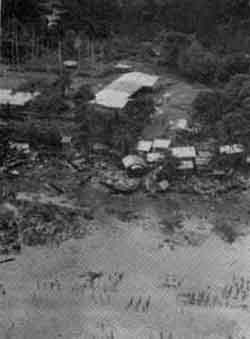
Picture of tsunami damage on Bongo Island (Photo: dost.gov.ph)
Tsunami Outside the Philippines
Tsunamis may also be generated from distant locations, such as those coming from other countries bordering the Pacific Ocean like Chile, Alaska in the USA and Japan (far field tsunamis). The tsunami of May 2, 1960 that was generated by a strong earthquake from Chile killed 61 in Hilo, Hawaii while 20 people were reportedly killed in the Philippiens. Travel times for tsunamis generated in distant locations are longer (1 to 21 hours) and will generally give enough time for warning from the Pacific Tsunami Warning Center (PTWC) and Northwest Pacific Tsunami Advisory Center (NWPTAC).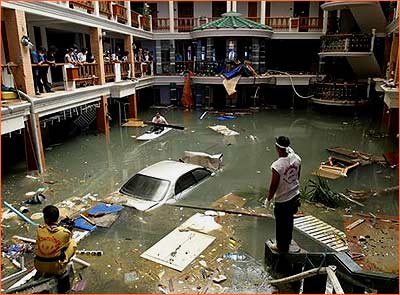
Picture of Tsunami damages (including floating car) in Thailand during the 2004 Indian Ocean Earthquake (Photo: icfdonate.net)
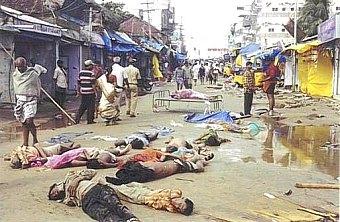
Picture of Dead Human Bodies in After the Tsunami in India (Photo: wendyfoundation.org)
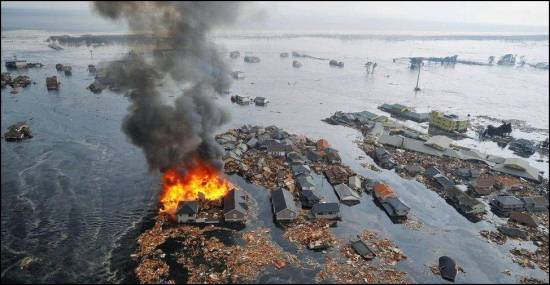
Picture of the Latest Devastation Brought by 2011 Tsunami in Japan. (Photo: Reuters/AP)
How is Tsunami Generated?
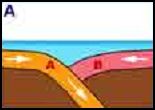
Tsunamis are commonly created in subduction zones under the ocean where 2 plates collide with one plate (A) moving down under the other (B).
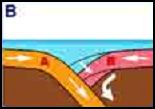
When plates get stuck, the overriding plate (B) gets distorted.
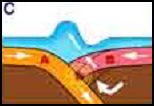
Stuck area ruptures triggering an earthquake and pushing up the ocean floor and sea water above. This starts the tsunami that moves in opposite directions.

There are two possible behaviors of the surface that may observed
E1-E2
On the side where the ocean floor rose, considerable volume of water is pushed up. This causes the shifting of sea water. As a result, sea water is pulled up back away from the shore, causing the water to drop along the coast, which then pushes back as tall wall of sea water that hits the coastal areas.
F1-F2
On the other side of the downgoing plate, the sea water surges up and huge waves hit the opposite coast suddenly. For this case, there will be no drop in sea water at the coasts. What can be observed is the sudden rise of water.
On the side where the ocean floor rose, considerable volume of water is pushed up. This causes the shifting of sea water. As a result, sea water is pulled up back away from the shore, causing the water to drop along the coast, which then pushes back as tall wall of sea water that hits the coastal areas.
F1-F2
On the other side of the downgoing plate, the sea water surges up and huge waves hit the opposite coast suddenly. For this case, there will be no drop in sea water at the coasts. What can be observed is the sudden rise of water.

When the wave enters shallow water, it slows down and its amplitude (height) increases.

Wave animation showing the initial "drawback" of surface water
Some Natural Signs of an Approaching Local Tsunami
- You might feel the ground or earth is shaking (earthquake)
- Unusual sea level changes. Sudden sea water retreat of rise.
- Rumbling sound of approaching waves
What To Do Before or During Tsunami
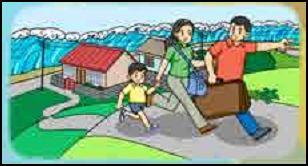
Do not stay in low-lying coastal areas after a strong earthquake. Move to higher grounds immediately.
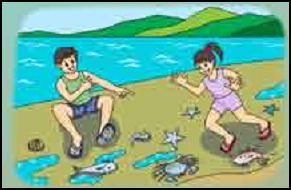
Never go down the beach to watch for a tsunami. When you can see the wave, you are too close to escape it.
During the sudden retreat of sea level, interesting sights are often revealed. Fishes may be stranded on dry land thereby attracting people to collect them. Also sandbars and coral flats may be exposed. These scenes tend people to flock to the shoreline thereby increasing the number of people at risk.
Stay out of danger areas until an "all clear" is issued by competent authority. A tsunami is not a single wave but a series of waves.
References: dost.gov.ph | phivolcs.dost.gov.ph | wikipedia.org
